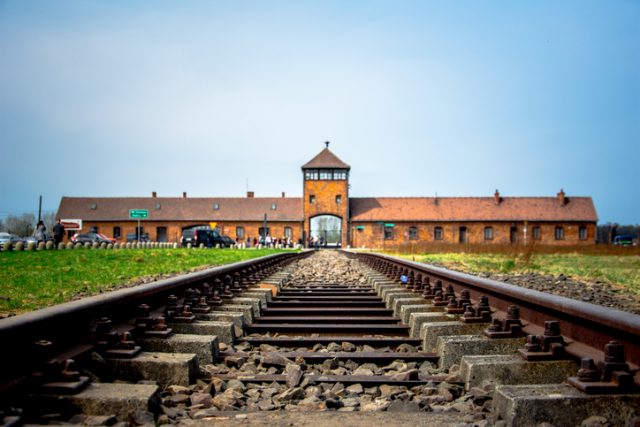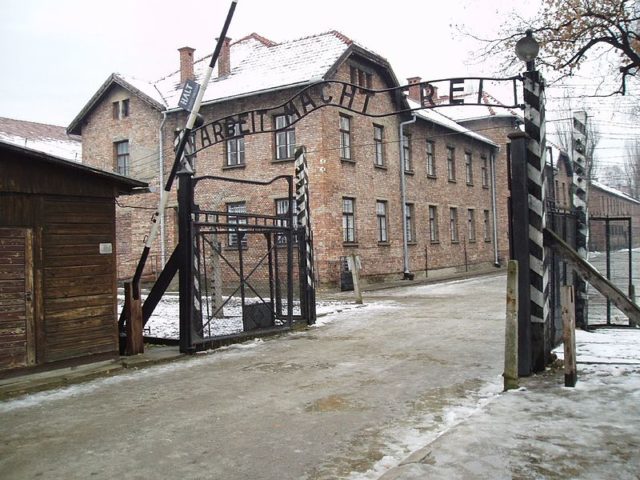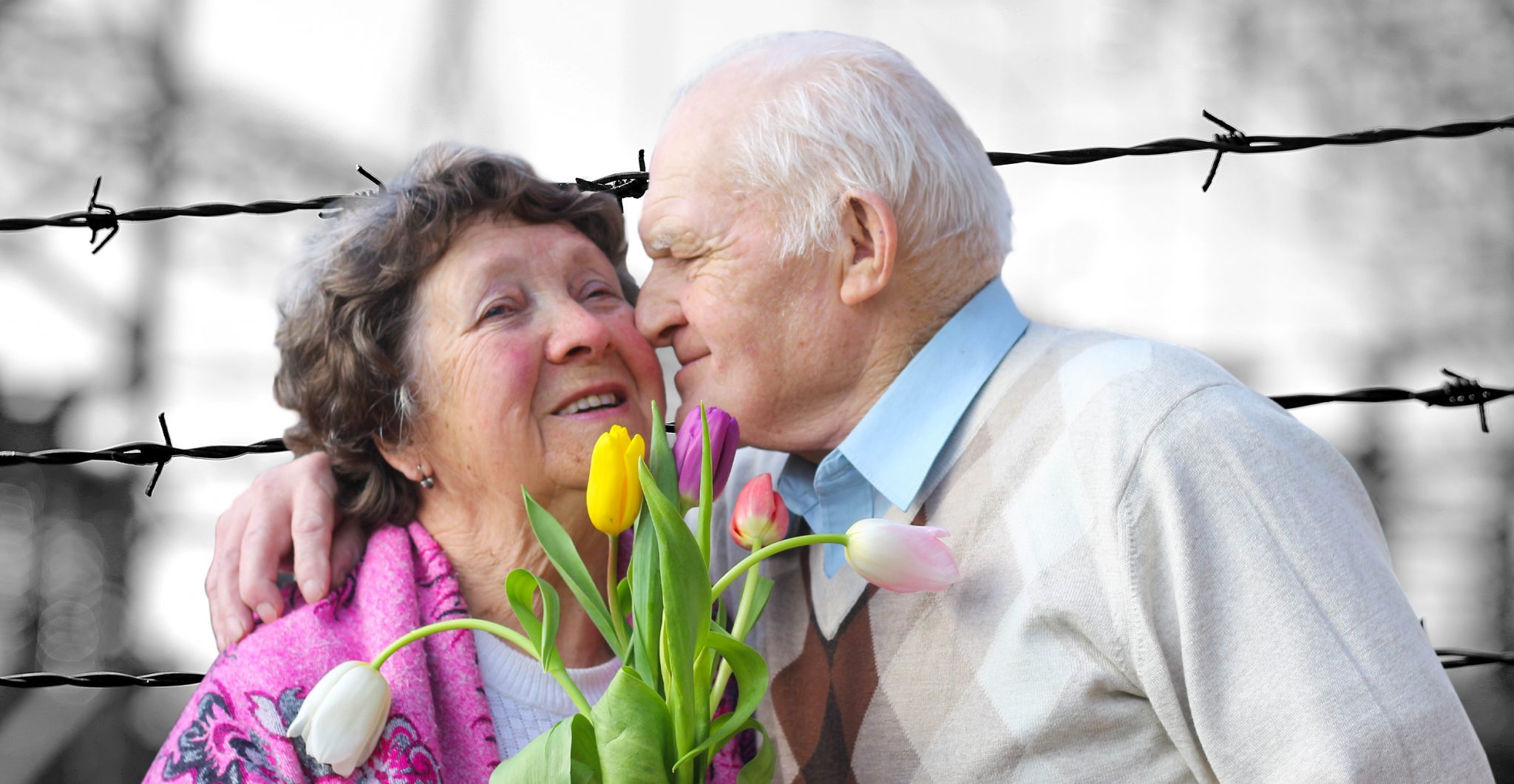It’s hard to imagine love and lovers blooming in the Nazi camp of Auschwitz, but as the poets declare, love will not be denied, no matter how harrowing the circumstances. It was a period of utter despair for the thousands and thousands of prisoners who passed through those infamous gates, most never to be seen again. Finding love was the last thing on their minds; for them, life was strictly about survival.
But the intensity of human connection that comes through love was a paradox that some, trapped in that nightmare, wanted nonetheless. When everything around an individual is falling apart, clinging to life by clinging to another person can bring solace. That’s what happened to Helen Spitzer and David Wisnia, who met at Auschwitz in 1943 and against all odds became secret lovers. He was just 17 years old — a boy, really — merely trying to survive. She was 25 years old, a more experienced young woman who needed — and gave — comfort.
“She chose me,” Wisnia recently recalled to the New York Times from his home in Pennsylvania. “I had no knowledge of what, when, where,” he said, an allusion to his lack of experience in matters of the heart. “She taught me everything.” He called her by the nickname ‘Zippi.’

He had to grow up quickly in the camp, where he was charged with the horrid task of retrieving the bodies of those who had given up and taken their own lives. Spitzer was marginally more fortunate, in that her skills saw her chosen as the camp’s graphic designer. Consequently, both were relatively safe in the hierarchy of Auschwitz because of their respective abilities. They were useful to the Nazis, and that protected them somewhat. Furthermore, Wisnia had a marvelous singing voice that kept the camp guards entertained.
Their love bloomed in the camp and approximately once every four weeks or so, they met to consummate their romance, in a place hidden from the prying eyes of guards. Other prisoners helped hide them while they hurriedly made love behind boxes of clothing. They dreamed of escaping the camp together, but knew any attempt would most likely end badly.
Lovers in Auschwitz, Reunited 72 Years Later. He Had One Question.
Was she the reason he was alive today? https://t.co/hx8bWqgEOo— Auschwitz Memorial (@AuschwitzMuseum) December 8, 2019
Instead, they dreamed of being reunited in Warsaw after the war. Because of their positions they, unlike so many others, had a chance at freedom, if they could just survive until the liberation. They did, but got separated in the aftermath of the liberation.
Wisnia, after working with the US Army, went to America where he first stayed in New York City and got married, later settling in Levittown, Pennsylvania. Spitzer, who had been one of the last to leave the camp alive, went to her childhood home of Bratislava, Slovakia. She married a UN security officer, participated in many UN humanitarian projects, and they later settled in America, first in Austin, TX then in New York City in 1967.

Over the years, Wisnia wondered two things: what had become of his wartime lover, and whether she had helped him survive, by ensuring his name never made it onto the lists of those destined to not make it out alive. As the camp’s graphic designer, she was able to use her design skills to manipulate paperwork and reassign prisoners to different jobs and barracks.
It wasn’t until 2016, in New York City, that he got his answers. After an unsuccessful attempt to meet decades earlier, Wisnia’s son, a rabbi, initiated contact again with Spitzer (whose last name was now Tichauer), who was now bed-ridden in her apartment with an aide looking after her, and she agreed to a visit. Wisnia and two of his grandchildren headed to her apartment in Manhattan. Tichauer had lost her husband in 1996 and had no children, while Wisnia had had 4 children and 6 grandchildren.
2 prisoners became lovers in Auschwitz. When they reunited 72 years later, he had one question to ask her. https://t.co/yEN7a4JiXn pic.twitter.com/lOb4R01BQl
— The New York Times (@nytimes) December 8, 2019
Upon their arrival, they discovered her confined to a hospital bed, her eyesight and hearing were poor and it took a moment or two for her to realize who he was. When she did, she smiled like a young woman again. “Her eyes went wide, almost like life came back to her,” said Wisnia’s grandson Avi, who was 37 at the time. “It took us all aback.”
He leaned in to take her hand, at which point she asked in front of his grandkids, “did you tell your wife what we did?” He laughed and chided her, exclaiming “Zippi!” in joy. The meeting lasted 2 hours and they spoke to each other in English.
Finally, Wisnia simply had to know whether she had kept him from the horrible fate so many other inmates met. He leaned in again and asked, and Tichauer responded by putting 5 fingers in the air, “I saved you five times from the bad shipment.” Wisnia had his answer. “I knew she would do that,” he told the Times. “It’s absolutely amazing.”
https://www.youtube.com/watch?v=heRZw3yvj3A
But here was more to be revealed. “I was waiting for you,” Tichauer said. After she escaped the camp, she had followed the plan initially and waited for him in Warsaw. Wisnia was astonished as he was not able to show up for the post-war meeting.
The secret lovers of Auschwitz said “I love you” to each other for the final time and never saw each other again. She passed away in 2018 at age 100. But before their final parting she had one final request. For him to sing to her. He took her hand and sang her the Hungarian song she taught him at Auschwitz which they both had never forgotten.
Wisnia wrote a memoir in 2015, “One Voice, Two Lives: From Auschwitz Prisoner To 101st Airborne Trooper,” in which he mentions Spitzer, but under a pseudonym.
It was not until his children prodded him into talking about horrors of the war and the woman who helped sustain him, that he mentioned her to anyone. “How do you share such a story with your family?” he noted to the Times. Now, though, he travels to libraries and schools to speak with young people, reminding them of that dark period and what life was like for inmates.
Related Article: Separated at Birth – How Identical Twin Nazi and Jewish Brothers Found Each Other
“There are few people left who know the details,” Wisnia lamented. He uses his platform as a public speaker to share the unvarnished truth about exactly what went on in the camp. According to experts, there are only about 2,000 people left alive who survived Auschwitz.
